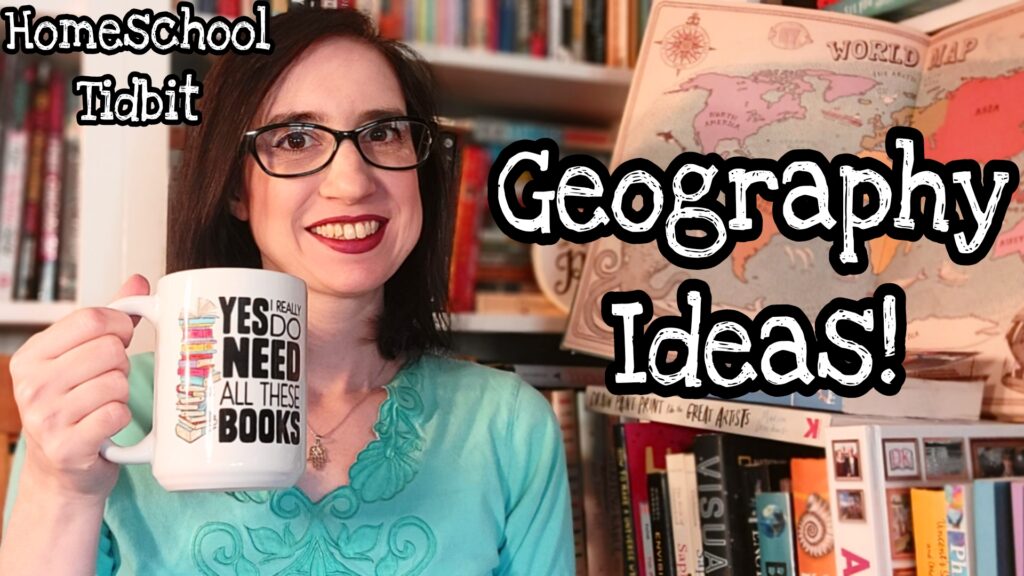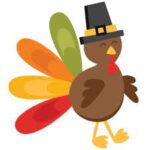Homeschool Tidbits: Simple and Fun Ways to Teach Geography
November 4, 2022
 Welcome to Build Your Library’s Homeschool Tidbits: Episode 35 – Simple and Fun Ways to Teach Geography. In this weekly video series, I will delve briefly into a topic related to homeschooling and will share some of my knowledge and expertise as a long-time homeschooling mother of 4 children. Three of whom have graduated high school and one who is a college graduate!
Welcome to Build Your Library’s Homeschool Tidbits: Episode 35 – Simple and Fun Ways to Teach Geography. In this weekly video series, I will delve briefly into a topic related to homeschooling and will share some of my knowledge and expertise as a long-time homeschooling mother of 4 children. Three of whom have graduated high school and one who is a college graduate!
Geography can seem like a tricky subject to teach. Especially, if you are like me, and you have a terrible sense of direction. But oddly enough, despite my ability to get lost literally anywhere, I love studying geography. Thankfully, it is more than just being able to read a map. It encompasses map skills, of course, but it also is about learning about the environment and landforms. Geography is studying different countries and cultures. It’s even understanding how water routes and land masses helped societies and civilizations flourish or fall.
Geography doesn’t necessarily need to be a separate subject in your homeschool. And you can start teaching it to your very young children. Today I’m going to share some ideas to help you get started!
If you use Build Your Library curriculum, some of these are things are integrated into the BYL lesson plans, and you may already be doing them. But some of these ideas may be new to you. I hope you find something here that is useful for your geography studies.
Maps and Globes
My first tip is the most obvious. Keep a world map or globe handy. Wall maps are great for viewing the entire two-dimensional rendering of the world (or the United States), visible all at once. However, sometimes you may not have the required wall space to display them.
Globes are much smaller and easier to pull out to examine and then put away on a shelf. They also tend to be more visually accurate, as three-dimensional renderings more closely resemble the actual Earth and do not distort distances and locations to lie flat.
 Keeping a globe or map handy means that whenever you read about a new location or just want to remember where a place is located, you can easily look it up. For example, if you are reading a story that is set in India, you can grab your globe. See if your child can find where you live, then travel (via finger on the globe) to India to see where it is located. How far it is from your home? How would you need to travel to get there? Is it closer going east or west around the world to get there?
Keeping a globe or map handy means that whenever you read about a new location or just want to remember where a place is located, you can easily look it up. For example, if you are reading a story that is set in India, you can grab your globe. See if your child can find where you live, then travel (via finger on the globe) to India to see where it is located. How far it is from your home? How would you need to travel to get there? Is it closer going east or west around the world to get there?
When my kids were younger, we used to play a game using a big wall map in the kitchen. I would call out the name of a country, and then they would have to go find it on the map. Because there were three of them playing at once, it became a contest to see who could find it first. They were pretty competitive and became very adept at finding countries on the map. Since we played this game often, the knowledge seemed to stick much better too,
Another fun idea is to use a blank world map to track your reading. My youngest did a Read Around the World project a few years ago. She has since moved on from it, but we still reference that map rather frequently. I printed out a huge blank map in sections and glued it to a tri-fold board. Then whenever we’d read a book, she would color the country on the map and add a picture of the book cover along the edges. It helped her to learn quite a lot of geography, from map skills to studying different cultures.
Just having a map or globe handy will make it that much easier to talk about things like landforms, different countries, oceans, and more.
Geography Through History
I think one of the easiest ways to learn geography, is to study it in context by incorporating it into your regular history studies.
This can start with Prehistory as you talk about the changing landscape as continents shifted from one huge landmass to what we would recognize as the seven continents today. You can cut out the continents from an old map or a blank map and have them fit together to see how they might have fit together as Pangea in prehistoric times.
When you are studying history and learning about different events, you can have your children find those places on a map. It’s particularly interesting when you are studying places like Ancient Rome or events like World Wars, to see how the borders and countries were constantly changing.
Adding in great living books set in countries and time periods that you are studying in history will bring those cultures and places to life. Having a story to peg that information will ensure that your child will truly learn the material.
Games, Videos, and More!
There are also so many fun ways that you can incorporate geography into your homeschool day. You can put together map puzzles and play games like Scrambled States of America or Ticket To Ride.
YouTube has many great videos like Geography Now and National Geographic Kids. You can also watch great documentaries like Planet Earth or Blue Planet. There are even games to play on the computer or your phone like GeoGuessr, where you use Google Maps to figure out where you are in the world. Seterra Geography Games is another activity where you can take tons of fun map quizzes to test your geography knowledge.
Cooking is another great way to learn about new cultures. I love trying new foods. When we study a country, I like to try to find a few new recipes to try out. There are also fun subscription boxes, like Universal Yums, where they send you snacks from around the world.
And don’t forget the arts! When you are learning about a different culture or time period, try to incorporate their art and music into your day. You can easily add this to your Morning Basket. You can listen to a composer, watch a video of a dance performance or study a piece of art as part of your morning routine.
There are so many fun and easy ways to incorporate geography into your homeschool routine, it never has to be a boring subject!
Coming up next…
I hope you found this Tidbit helpful! Come back next week for more homeschooling inspiration!
Until then, happy reading!
See Other Related Articles:
- The Importance of Reading Aloud
- The Benefits of Reading Aloud to Teens
- Read Aloud Sabotage
- A Literary Education book
- About Build Your Library
- Homeschool Tidbits: Build Your Library’s Weekly Video Blog Series
November Contest Secret Code: THANKS 
 Emily Cook is the author and creator of the secular homeschool curriculum Build Your Library, a literature-based K-12 program infused with the teachings of Charlotte Mason. She writes full-year lesson plans as well as shorter topical unit studies. Emily has been homeschooling her four children in Southern NH for 21 years. She is passionate about reading aloud to children of all ages and loves to share her love of literature with others. She and her family also make incredibly dorky videos about homeschooling, books, and more on Youtube at ARRRGH! Schooling. You can follow her on Facebook, Twitter, and Pinterest. You can also check out her author page on Amazon.
Emily Cook is the author and creator of the secular homeschool curriculum Build Your Library, a literature-based K-12 program infused with the teachings of Charlotte Mason. She writes full-year lesson plans as well as shorter topical unit studies. Emily has been homeschooling her four children in Southern NH for 21 years. She is passionate about reading aloud to children of all ages and loves to share her love of literature with others. She and her family also make incredibly dorky videos about homeschooling, books, and more on Youtube at ARRRGH! Schooling. You can follow her on Facebook, Twitter, and Pinterest. You can also check out her author page on Amazon.
